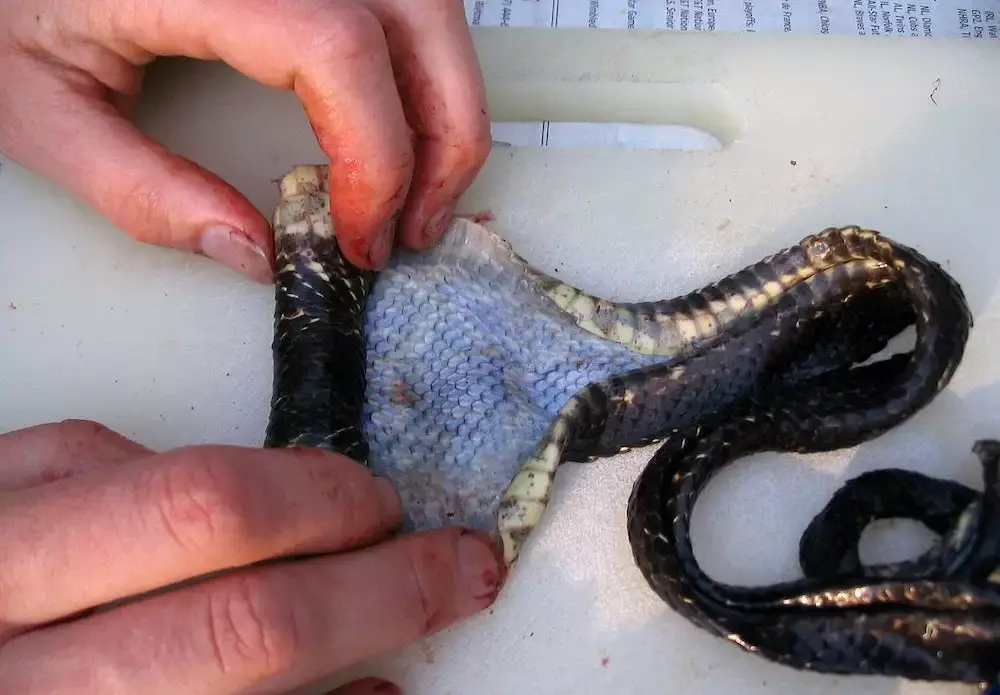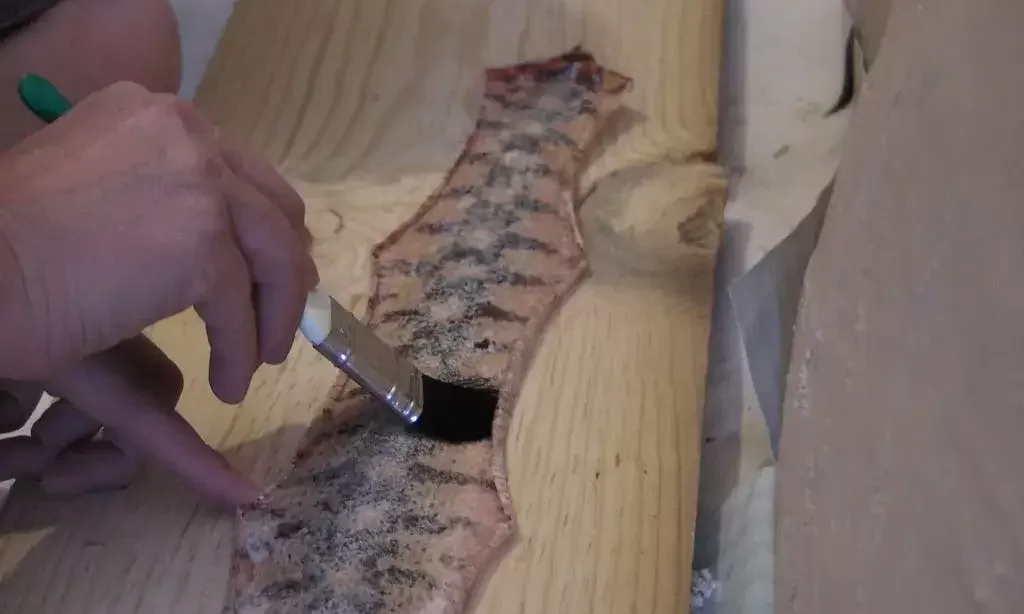How to preserve snakeskin? Snakeskin may be preserved at home using glycerine and ethanol. To begin, you will need an empty container and a piece of clean snakeskin, among other things. Extra actions may be necessary if you refrigerate your snake, but the end result will remain the same regardless.
Snakes can be found practically all across the world. As a result, skin preservation is something that everyone should master at some point in time. You will always find snakes around unless you are in the Arctic, Scotland, or Scandinavia.
Snakes are inherently fascinating to people. Who would not be captivated by over 200 different varieties of snakes throughout the world? Some African ethnic cultures revere certain snakes, for example, pythons, whereas Indians glorify them and people in the United States keep them as companions.
Many people were fascinated with snakes and wanted to retain them or at the very least preserve their skin. So, you would like to know the methods to keep snakeskin in good condition?
Knowing how to retain snakeskin is a talent that every survivalist needs. This handy supply of valuable items, like pine trees, is simple to detect and recognize. Fortunately, the procedure is simple.
Furthermore, this feat does not require a large number of tools. We saw snakes every day where I grew up, and I have eaten and saved the skins of a lot of different types of this fascinating animal.
I will try my best to guide you through the basic steps and provide suggestions for other approaches.
It all starts with skinning the snake so let’s talk about that first.
Proper Snake Skinning and Cleaning Instructions

Place the deceased snake on the cutting board, using a steady hand to do so. You must be absolutely certain that the snake is entirely dead—since even dead snakes may bite!—before moving on.
It is true, whether you believe it or not. Some tanners even urge that the snake’s head be fully removed in order to be on the safe side. It is all up to you.
Be very certain that the organism is no longer alive. And, if you want to skin it from the head, you must be careful not to hurt yourself with its teeth since a severe prick might be deadly.
If you wish to skin the snake by cutting the chin of the snake beneath its head with a razor blade or a scalpel, you may do so using a scalpel or a razor blade.
Make sure to cut just deep enough to allow the skin to be separated from the lower jaw muscles and any other connective tissues that may be present.
A sharp knife should be used to cut through the snake’s neck, down its belly, and out its tail at the end of the process.
Once this is completed, gently grasp both sides of the loose flesh on the snake’s chin and draw them up to its head; then slowly remove the thick skin of the reptile from its head down to its tail while holding the exposed tissue with one hand.
If there is any loose flesh left on the inside of the snake after the skin has been stripped away, you must scrape it away with a spoon from the inside of the creature.
Work your way from the head to the tail, being careful to use a spoon or butter knife to avoid cutting or puncturing the skin along the way.
Now, if you lack the tools required in this process, we will be linking recommendations that are tried and tested to work perfectly well. If you do not have a cutting board(which is rather hard to believe if you live in a home), we suggest you get Farberware Plastic Cutting Board off Amazon.
This cutting board is constructed of plastic that is free of BPA. The material will not harbor smells, stains, or hazardous microorganisms since it is nonabsorbent and nonporous. It is mild on knives, preventing their blades from becoming dull as quickly as they otherwise would.
It is reversible, allowing you to double your cutting surface area. It also has a hand hole for increased stability and control.
Use it to cut game and poultry and fresh veggies into thin slices or chop them into small chunks. It is really easy to clean, and you can put it in the dishwasher to make it as good as new.
If you do not have scalpels and you do not want to use your kitchen knife, then order Edu-Labs Lab Disposable Scalpels. They are available in a range of sizes, and you can simply dispose of them (as the name states) after you are done doing the dirty deed.
Also read: How To Soften Bandanas?
After You Have Successfully Skinned The Snake, Here’s How To Keep It Safe:
After you have removed all of the extra flesh and lard from the snake’s insides, wrap it up and store it in a large pickle jar. Your combination of pure glycerol and good quality isopropyl ethanol must be kept in the jar.
Let the skin sink entirely under the chemical solution’s surface. Then cover the container with a lid. Before completely immersing the snake in the jar, make sure the glycerol and ethanol are mixed in equal parts.
Allow 2 to 3 days for the skin to soak thoroughly in the container. After three days, remove the skin and scrub off any loose flesh with your small knife or fork until the snake’s insides are entirely clean.
After that, reapply a general quantity of glycerol to the insides and outsides of the skin and let it dry on a rack. After a day has passed, carefully wipe the skin with a moist towel to remove any extra skin that has clung to the skin.
Your snakeskin is now ready for storage, and you can merely store it as you see fit. You have now become a professional in the art of preserving snakeskin.
Not all of you will have alcohol at home. Fret not, though, because you can order it pretty easily from a plethora of online stores. We suggest buying Swan 70 Isopropyl Alcohol.
It contains 70% ethyl alcohol and can also be used as first aid for small wounds, scrapes, and burns to help avoid infection. That is to say; if you spend money on this, it will not be wasted.
Preserving Snake Skin With Salt

Glycerine and alcohol are not necessary for this technique. Let us see if we can find out more about it.
Instead of plunging the skin into a container of pure glycerol and ethanol mixture immediately after skinning the snake and detaching the dermis from its meat, you must first generously administer sodium chloride to the interior of the skin to protect it from getting contaminated.
It is required to keep a large quantity of salt in the fleshed-out skin for 2-3 days before removing the salt and hanging the skin out to dry on a rack where it will not be exposed to direct sunlight.
Alternatively, you may cure the skin by putting it immediately into a big jar with an acetic and salt solution. The skin must be totally soaked in the acetic and sodium chloride mixture for two to three days in order to clean and tan it correctly.
In this method, your conserved snakeskin will remain longer once it has been retrieved from the refrigerator and dried prior to being stored.
If any snake scales are still noticeable after the dehydrating process, just eliminate those with a brush or use a safe descaling procedure to give your skin a lovely look.
Oiling your maintained snakeskin after a tanning session can create a more refined look, do not you think? You could if you wanted to.
Any essential oil can be mixed with warm water and rubbed onto the skin with a brush to accomplish an elegant shine.
To sell or store your polished snakeskin, let it air dry for three to four hours after it has been oiled. Using well-preserved snakeskin for leather and other crafts is possible.
Recommended: Will Keeping Lights on Keep Mice Away?
What Are The Many Applications Of Snake Skin?
Snakeskin has long been used in Eastern medicine, either on the skin or in pill form. Snakeskin is used in research to test medications made by humans.
Skin problems, convulsions, gastrointestinal issues, and heart problems are all treated using snakeskin.
Skin illnesses such as ulcers, cysts, boils, chafing, flaky skin, skin rashes, and mites, as well as eye infections, hazy patches in your eyes, dry mouth, and hemorrhoids, are treated using snakeskin. Snakeskin is utilized in pain and stiffness relief ointments and lotions as well.
Traditional healers are drawn to snakes for at least three reasons: their extraordinary suppleness and agility, the fact that they discard their skin, and the fact that some snakes are insanely dangerous when they bite.
Snakes’ flexibility has led to speculation that they may be useful for the treatment of stiffening, such as rheumatism.
Snake extracts are now utilized in a variety of traditional and patent arthritis treatments, and they are occasionally steeped in alcohol to form a stiff joint extract.
Traditional observers observed that the rapidity with which certain snakes moved suggested that their material, like medicine, could circulate fast across the body. Snakes are thought to help with “wind” disorders characterized by rapid movement.
People should avoid drinking snake wine if they are exposed to potentially pathogenic wind since the snake medicine’s quick movement may facilitate the wind’s early penetration.
Snakes are said to offer a rejuvenating ability for healing chronic skin disorders since they lose their skin.
Consequently, both the skin and the whole snake are utilized to treat skin problems. Eczema, carbuncles, skin irritation, and dermatitis are just a few of the ailments that may be fixed by snakeskin.
Is Snake Skin Dangerous?
There is more to preserving snakeskin than just trying to keep the leather supple. You must be mindful of the dangers and thoroughly clean up after yourself.
While using any equipment or surfaces, make sure they are clean and sterilized. Make sure to wash your hands, as well.
Don’t make contact with your skin or hair while you are going through the steps. Snakes carry a variety of germs and viruses, including those that cause syphilis and rabies. Pregnant women and children under the age of ten should avoid contact with snakes.
It is important to be wary of the hazards, even though they are small if you follow good hygiene practices. Always use gloves while capturing snakes as a means of survival.
In addition to protecting against certain snake bites, these garments will prevent your skin from immediately coming into close proximity with the snake.
Conclusion
How to preserve snakeskin? We just informed you guys of a couple of ways to cut a snake and then preserve its skin after it has died and the poison and toxic substance has left its body.
Whatever you want to do with your preserved snakeskin, self-tanning allows you to develop an almost limitless supply.
Snakes are usually abundant in a survival scenario. Snakes are typically a good option when food and supplies are scarce in a desert area.
Naturally, learning how to collect and humanely dispatch snakes would be advantageous. Although the method requires practice, it is a simple notion.
A bifurcated stick or instrument holds down the snake, and its head is chopped off. Keep an eye out for deadly snakeheads.
Unfortunately, they may continue to discharge poison even after they have died for days or weeks.
As you do it more often, you will discover that the drying and preservation of snakeskin become simpler and quicker as you practice. Fortunately, this exceptionally long-lasting survival technique employs a typically disregarded target species.

